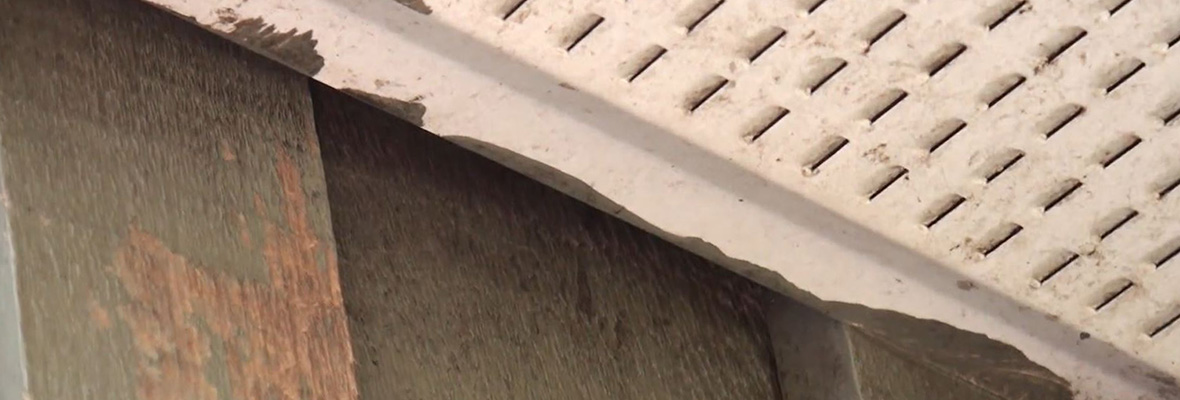Inspecting Your Home for Bat Entry Holes — 4 Things You're Doing Wrong
We appreciate how inconvenient a bat infestation is. The laws surrounding the removal of bats in most states are complicated to say the least, and this is only the very tip of the iceberg.

Trying to get a hundred or more flying mammals, that all bite and move much faster than you can, out of a space that they wish to call home … Well, it's virtually impossible. The only way that it IS possible, is by knowing as much as you can possible know beforehand.
Inspecting your home for bat entry holes is important and should be done as soon as you realize you have a problem on your hands. Here are some common mistakes made by property owners when performing this inspection … You know; so you can avoid making the same ones.
1 - You're only paying attention to the ‘common' spots.
When we tell you that bats can somehow squeeze through a hole that is barely three-eighths of an inch across, we mean it; it genuinely happens. Bats, rats, mice … three creatures that are very well known for managing to get into even the smallest of holes, meaning that every missed patch of damage on your roof or around your attic will — at some point — become a critter entry point.
You should pay particular attention to certain areas, but that doesn't mean that you should neglect your inspection duties in the lesser-hit spots. Professional bat removal experts perform 30-plus-point inspections when they bat-proof your home, and you will need to do the job to the same standard if you want the best results.
Do your research beforehand — know what spots are hit the most, but also the spots that are likely to be missed too.
2 - You're not checking twice.
How does the festive rhyme go?
“He's making a list, he's checking it twice.”
Something along those lines, right? Santa had the right idea too — you should perform TWO bat entry-point inspections on your home or building. One should be done during the day, making the most of natural daylight. The other should be done at night, using a flashlight or head torch.
By doing these TWO inspections, rather than just the one, you are guaranteeing that you'll find almost every hole — if not every hole. There will be points that you miss because they aren't lit up from the outside (if you're in the attic, looking around during the day). There might be spots that aren't obvious at night, when you're using just torchlight alone. The two combined, however, are likely to be a recipe for success.
3 - You're not taking your own safety into account.
We're sorry to get serious with the safety talk, but your safety is more important than anything else when you're trying to find where those pesky bats are getting inside your property.
There are lots of safety aspects to think about with bats. To start with, you're working up in the attic or on the roof. If you're lucky, you might just have a tree hollow to contend with, but this isn't common. Sadly, it's almost always the attic or roof that gets targeted.
You will need a secondary person to keep watch and call for help if anything else goes wrong. What happens if you were to fall from the roof and you had chosen to do the job alone? There would be no one around to call for help or administer medical aid. Always make sure you have a second person ... and that they're reliable.
Moving aside from that, bat guano has the potential to be dangerous. Histoplasmosis is a disease that can be spread through bat guano. It is thought that dry feces become dusty and then transport the disease spores up into the air, where you can then inhale them. If you are fit and well, there is a good chance that the disease will not affect you, or that you will just experience a slight cold or similar symptoms for a few days. If you are not fit and healthy, on the other hand, the disease can be dangerous and even potentially fatal. That's before you start looking at the plentiful other diseases that might come with your colony of bats, including rabies.
This means that you will need proper protection — coveralls, a breathing mask, some eye goggles, etc. Anyone who works with you will need the same protection also, and you must then make sure that everything you use or come into contact with is then disposed of.
4 - You're not using some common sense.
We're not trying to insult you at all, but sometimes, getting basic is exactly what works. Have you tried heading outside at dawn or dusk — or the couple of hours straight after — to see where the bats are flying around?
During these two times the bats will be most active; first leaving the roost to hunt for food, and then coming back to sleep again when the sun comes back up. By keeping your eyes opened and your ears peeled, there is a chance that you will both see and hear them.
Wings will flap. You'll hear squeaking noises too — this is bat communication. (Although, this can't always be heard by human ears.) You may even see them if you have some moonlight or a streetlight to help.
You'll soon see where they're coming from, or at least a general area in which you can start your investigations.
Go back to the Bat Removal home page or email us for more info about Inspecting Your Home for Bat Entry Holes — 4 Things You're Doing Wrong

